FHWA National Dialogue on Highway Automation
Dallas, Texas
November 14-15, 2018
PowerPoint Presentation Version [PDF 696 KB]
You may need the Adobe® Reader® to view the PDFs on this page.
Contact Information: HighwayAutomation@dot.gov
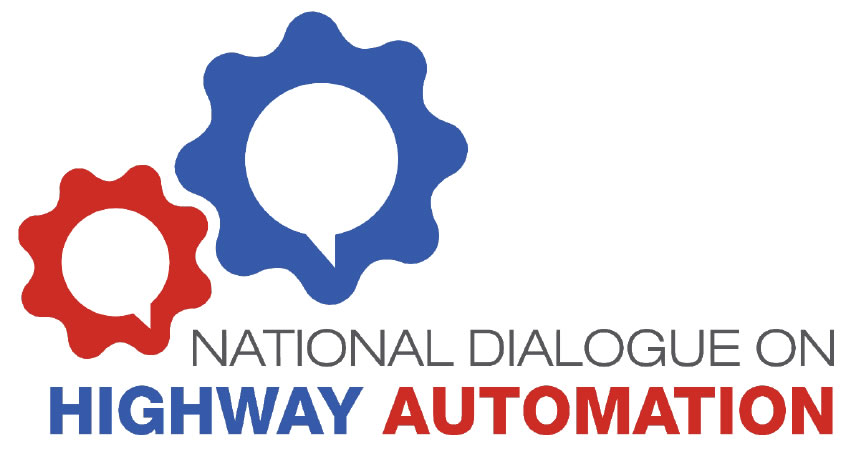
Slide 1. FHWA National Dialogue on Highway Automation
Infrastructure Design and Safety
DoubleTree Campbell Center, Dallas, TX
November 14-15, 2018
Slide 2. Levels of Automation

Slide 3. USDOT Modal Agencies and Roles

Slide 4. FHWA Released Request for Information (RFI) in March 2018
Select Themes:
- Greater Uniformity and Quality in road markings and traffic control devices would enable
automation.
- FHWA should take a Leadership role in convening stakeholders to encourage collaboration.
- Certain Data Elements about the roadway environment are useful for industry, State, and local
DOTs to share and could improve automation operations.
- Conducting Pilots and supporting pilot testing are important for facilitating learning and
collaboration.
- Uncertainty in infrastructure investment and allocation of limited resources are key concerns
for State and local agencies.
Slide 5. AV 3.0 Released in October 2018
- Automated Vehicles 3.0 provides:
- New multimodal safety guidance
- Clarifies policy and roles
- Outlines how to work with U.S. DOT as automation technology evolves
- U.S. DOT will use the automation principles and strategies defined in figure below.

Slide 6. AV 3.0 — FHWA's Authorities Over Traffic Control Devices
- U.S. DOT recognizes that the quality and uniformity of road markings, signage, and other traffic control devices support safe and efficient driving by both human drivers and automated vehicles.
- The MUTCD is recognized as the national standard for all traffic control devices installed on any street, highway, bikeway, or private road open to public travel.
- FHWA will pursue an update to the 2009 MUTCD that will take into consideration these new technologies and other needs.
Slide 7. AV 3.0 — Considerations for Infrastructure Owners and Operators (IOO)
U.S. DOT provides the following considerations for infrastructure owners and operators, including State DOTs, metropolitan planning organizations (MPOs), and local agencies.
- Support safe testing and operations of automated vehicles on public roadways.
- Learn from testing and pilots to support highway system readiness.
- Build organizational capacity to prepare for automated vehicles in communities.
- Identify data needs and opportunities to exchange data.
- Collaborate with stakeholders to review the existing Uniform Vehicle Code (UVC).
- Support scenario development and transportation planning for automation.
Slide 8. What Is Data for AV Integration?
- Access to data is a limiting factor for AV deployment across all modes.
- Data exchanges can help increase access to data across traditional silos.
- U.S. DOT is using our convening power to understand critical needs for data exchange and the appropriate Federal role to enable them, using a common language.
For more information, visit https://www.transportation.gov/AV/Data and see the draft Framework for Data for AV Integration.
Slide. 9 The National Dialogue on Highway Automation
Slide 10. What Are Desired Outcomes?
FHWA may use inputs to:
- Assess national issues and priorities.
- Develop guidance, best practices, standards.
- Support necessary research.
- Adapt programs and policies.
- Create a national community or coalition.

Photo Courtesy of FHWA
Slide 11. Workshop Schedule
Month |
Event |
Location |
June 7 |
National Dialogue Launch Workshop |
Detroit, MI |
June 26–27 |
National Workshop 1: Planning and Policy |
Philadelphia, PA |
July 12 |
Automated Vehicle Symposium:
FMCSA–FHWA Truck Automation Listening Session |
San Francisco, CA |
August 1–2 |
National Workshop 2: Digital Infrastructure and Data |
Seattle, WA |
September 5–6 |
National Workshop 3: Freight |
Chicago, IL |
October 24–25 |
National Workshop 4: Operations |
Mesa (Phoenix), AZ |
November 14–15 |
National Workshop 5: Infrastructure Design and Safety |
Dallas, Texas |
Slide 12. Themes: Launch Workshop
- FHWA has a clear role as a facilitator.
- A national vision for automation will help clarify goals.
- Clear communication about the technology helps to encourage public acceptance.
- A lack of consistency (i.e.: traffic control devices, policies) can hinder adoption.
- Information sharing is important for enabling automated vehicles.
- There will be a transition period of a mixed-vehicle fleet, which will require interoperability.
Slide 13. Themes: Policy and Planning Workshop
- The transportation planning process may need to evolve to address uncertainty of AV impacts (e.g.: congestion, land use).
- Infrastructure investment and funding to raise overall condition enables not only automation, but all road users.
- Clearly defining roles and goals will help policy development.
- State and local agencies need education, resources, and guidance to support organizational readiness.
Slide 14. Themes: Data/Digital Infrastructure Workshop
- Data exchange can accelerate safe integration of AVs (see next slide).
- Important to achieve data standardization where useful and tangible.
- Lifecycle management and upkeep of data are emerging issues.
- Further clarity needed around digital mapping — who is building, level of detail needed, Federal role.
- Above activities may necessitate development and linkage of systems and technologies.
Slide 15. Themes: Freight Workshop
- Safety and efficiency are key priorities for the freight industry and its customers.
- How data can be used to enhance freight operations and in context of specific parts of a trip is important (e.g.: last–mile delivery, highways, etc.).
- May be useful to evaluate physical infrastructure design needs that may include designated truck lanes, impacts/changes to interchanges, and space at intermodal facilities for mode transfer (rail to truck).
- Consider research and engineering studies to determine loading patterns of automated (freight) vehicles and their impacts on the road infrastructure.
Slide 16. Themes: Operations Workshop
- Infrastructure standards and consistency remain critically important and stronger coordination with industry is needed to understand requirements.
- Clear processes and practices to guide interactions between AVs and emergency responders/law enforcement/public safety community are important.
- AVs will face a range of challenging operational environments, such as special events, work zones, as well as mix with diverse vehicle types (e.g.: non-automated, school buses).
- There are trade offs between near term vs longer term priorities regarding infrastructure maintenance, investment, and planning.
- A clear roadmap or national vision with milestones is needed to support the AV community.
Slide 17. Related FHWA Research Activities
Slide 18. Impacts of Automated Vehicles (AVs) on Highway Infrastructure
Project Goal
Develop practicable documentation and webinars to educate and inform DOT stakeholders about AV-related infrastructure needs.
Objectives
- Assess and understand the demands and potential impacts of AVs on current infrastructure assets.
- Assess and understand potential needs and impacts of AVs on the future design of new infrastructure.
Slide 19. Truck Platooning Impacts on Bridges
Project Goal
Conduct a Phase I study to understand structural safety regarding bridges with the introduction of Connected and Automated Vehicles.
Objectives
- Provide an overview of truck platooning technology.
- Identify most common, probable truck platooning scenarios.
- Document the research methodology and findings.
- Recommend load models for bridge evaluation.
- Propose design specification modifications.
- Recommendations for further research.

Photo Courtesy of FHWA
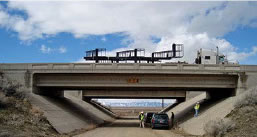
Photo Courtesy of FHWA
Slide 20. Cooperative Automation – Research Program
Safely improve the operational efficiency and maximize capacity of our Nation's urban and rural roadways
Research Focused on Arterial and Freeways
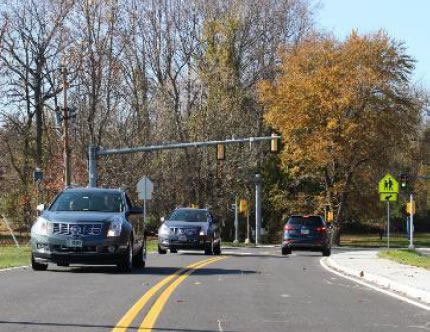
Source: FHWA.
Reduce fuel consumption at intersections by 20%.
|
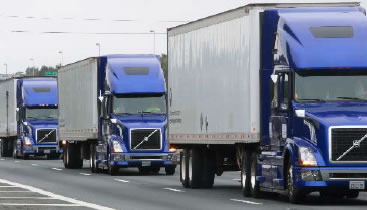
Source: FHWA.
Fuel savings of 10%.
|
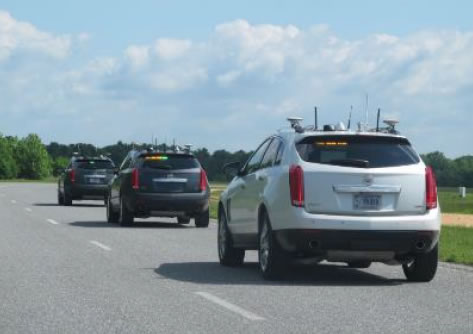
Source: FHWA.
Double capacity of existing lanes.
|
Slide 21. Cooperative Automation Use Cases – TSMO Proof of Concept Testing and Evaluation
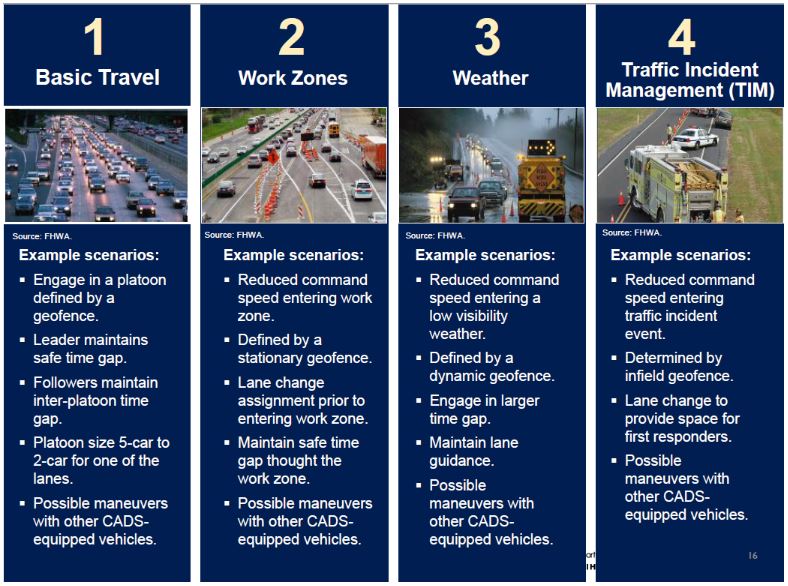
Slide 22. Vehicle to Pedestrian (V2P) Systems
- System may alert the driver or intervene to prevent or reduce severity of a crash
- Sensors used include:
- Optical cameras/computer vision
- Light detection and ranging (LIDAR) sensors
- Millimeter wave radar
- Direct wireless communications
Slide 23. What are we discussing today?
Slide 24. Session 1: Discussion Questions
Safe Integration of Automated Vehicles
- What can stakeholders do to assess and support safety as a priority when incorporating Automated Vehicles (AV) into the roadway and highway systems?
- What safety challenges could be encountered by vulnerable road users, pedestrians, bicyclists, roadway workers and emergency responders when sharing the road with AVs?
- How could existing roadway safety evaluation and safety planning tools be changed to address AVs? For example, how could crash modification factors (CMF) be impacted with the introduction of AVs?
Slide 25. Session 2: Discussion Questions
Infrastructure and Automated Vehicles
- What are the long and short-term impacts of AVs on roadways and structural infrastructure? For example, what are impacts of truck platooning on bridges, pavement rutting, etc.?
- What are possible changes in structural and operational infrastructure design, and asset management practices to address AVs and how could they be implemented?
- How will these changes impact existing standards, manuals, and other national guidance for highway design, highway maintenance, and traffic control?
Slide 26. Key Issues for Discussion
- Where and how AVs should be introduced on the roadway network to ensure the highest levels of safety from the beginning
- How to invest in the infrastructure of tomorrow in the context of rapidly changing and uncertain technology
- Budgeting for and constructing infrastructure to safely work with a mixed vehicle fleet, including manually driven, partial and fully automated vehicles
- Incorporating flexibility in asset design to build assets that can last for many decades and to adapt to changing uses.
Slide 22. Contact:
HighwayAutomation@dot.gov
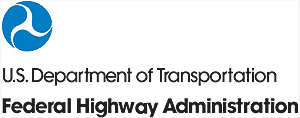
|






